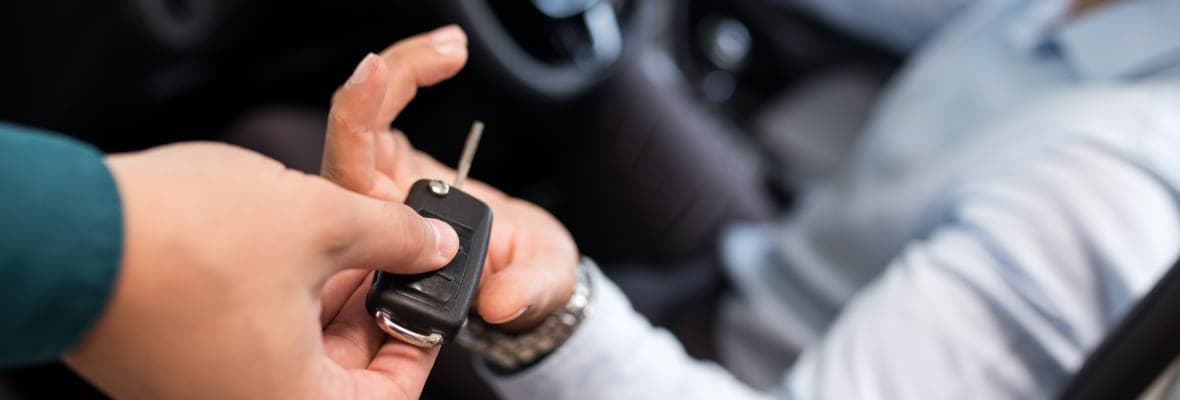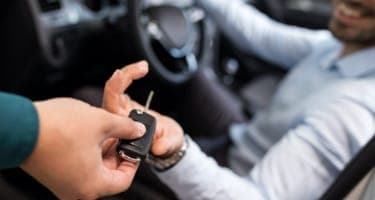Buying a car is one of the biggest investments you’ll make in your life. And if you’ve never bought a car before, then the process can seem even more daunting. Not to mention the dizzying array of new and second-hand cars available from dealerships, private sellers, and auction houses that can leave your heading spinning.
This article aims to inform first-car buyers (like you) of the car-buying process and help you take the steps you need towards owning your first set of wheels.
Setting a Budget
The first step in buying a new car is setting your budget. Keep it flexible, but always have a maximum price in mind — and make sure you stick to it.
Ensure your maximum price includes all the extras, such as on-road costs (e.g. stamp duty, registration, CTP insurance, and dealer delivery). You’ll also need to ensure you can afford the ongoing running and maintenance costs of the car you want.
A manual car is usually cheaper than an automatic and costs less to service, while petrol cars are generally cheaper to buy and service than diesel. You should also consider the size of the car. If you have a family, a two-door coupe is unlikely to be suitable. Instead, you may need to consider a sedan or wagon, which is likely to be more expensive.
There’s also the long-term cost of fuel to think about. While diesel vehicles can be up to a third more fuel-efficient, the savings are almost cancelled out by the fact diesel is more expensive than petrol.
The ongoing cost of maintenance also needs to be considered. Keep in mind that certain makes and models are more expensive to service than others (e.g. luxury European cars).
Think about what you are going to use the car for, and decide which features are the most important. Off-road driving or getting the kids to school? Engine power or fuel economy? Safety or compactness?
List all your criteria and prioritise them; try not to let emotion creep into your decision-making.
If you’re looking for an independent review to help you find your next car, look no further than Australian car reviewer Chasing Cars.
Private Sale vs Dealer vs Auction
Once you’ve decided to buy a car, the next decision you’ll face is where to buy it from. Car dealerships are often the safest bet, especially if you’re buying a used vehicle. That’s because licensed dealers are required by law to give you a warranty on the car.
If anything goes wrong with the car within the warranty period or mileage (whichever occurs first), the dealer will be required to fix it at no extra cost to you.
In addition, dealerships generally offer finance, allowing you to pay for the car over time. Most will be happy to take your old car as a trade-in to help offset the price.
Private sellers have no ‘overhead,’ which means they’re generally willing and able to sell the car for significantly less. The downside is that they’re not obliged to tell you, for example, whether the car has any money owing on it.
This is why you should complete a history check — also known as a VIN search or PPSR report — before you buy. While some providers charge up to $35 for an online PPSR check Budget Direct can arrange one for you free of charge. Get your free PPSR report now.
Unlike dealerships, private sellers are not required to offer warranties to cover you if things go wrong with the car. Hence the reason you should get an independent mechanic to carry out a pre-purchase car inspection.
While cars are generally cheaper at auctions, the risk of buying a ‘lemon’ is greater. That’s because you’re unlikely to get an opportunity to thoroughly inspect or test-drive the car before making the winning bid.
Buying a New Car
Before stepping into a dealership to buy a new car, do your research. That way, you’ll be more informed about specifications, prices, and independent reviews. If you go into negotiations prepared, the salesperson will be less able to take advantage of you.
Don’t waste your money on unnecessary extras that hike the price but provide few or no obvious benefits. In particular, read the fine print on things such as extended warranties, some of which force you to get the car serviced by the dealer, which may end up costing you more in the long run.
Don’t be afraid to haggle! If your timing is right and you negotiate skilfully, you might be able to push the price down substantially. Dealers have sales targets. If you go car shopping towards the end of a quarter or sales month, they might be willing to negotiate more than they normally would.
Also, remember — new does not necessarily mean ‘new’. Cars have a build date and a compliance plate showing when they cleared customs in Australia.
There can be a big difference between the two due to shipping times. Cars shipped to Australia the previous year are typically cheaper than the current year’s models, even though there’s little difference between them.
And before leaving the dealership, make sure you organise your car insurance.
Buying a Second-Hand Car
As with a new car, when buying second-hand it’s even more imperative you do your research.
Decide what sort of car you want and the condition it must be in. You’ll want to see the car’s service history, which will tell you how well it’s been looked after and whether it’s had any recurring problems. A car that’s had several owners and clocked up lots of kilometres is probably nearing the end of its serviceable life.
In contrast, a single-owner car with low mileage will be more likely to give you the trouble-free driving you’re after. Give the vehicle a very thorough inspection. Look for imperfections or damage (or attempts to cover up the damage).
Always check under the bonnet to make sure the engine bay is clean (and the engine oil is in good condition. Check the tyres still have sufficient tread and that the headlights and indicators are working. If you’ve got a trusted friend who knows about cars, invite them along to the inspection to be a second set of eyes.
Regardless of whether it’s a private seller or dealership, make sure the car has a roadworthy certificate that is less than 30 days old.
For more insights on how to buy a second-hand car, read our guide to buying a used car.
Test Drives
A test drive is the ultimate way to satisfy yourself that a car meets your expectations. It’s an opportunity to determine whether the interior is spacious and comfortable enough, as well as assess the car’s ride, steering, acceleration, braking, quietness, and visibility.
If you’re testing a second-hand car, it should start immediately, and the car’s engine should not make any strange noises. Its suspension should be quiet and smooth on bumpy roads. If the car groans or creaks or is a bit twitchy or bouncy, it may have undercarriage problems.
And the car’s air-conditioning system should be in working order.
Mechanical Inspections
If you’re still interested in a car after test driving it, your next step is to get it inspected by an independent mechanic. The seller should permit you to have the car inspected; if they don’t, treat it as a warning sign the car might have hidden problems.
If everything checks out and you decide to buy, notify the relevant transport authorities of the purchase, and make sure you organise car insurance.
How Your New Car Affects Your Insurance Premium
You should always consider any extra factors that may influence the cost of your new car and its insurance. From the age of your new car to the size of the engine, we know what affects the cost of car insurance.
Despite the cost of your premium, there are always ways to save with Budget Direct. You can even get 15%^ off your first year’s premium when you purchase a new policy online. Get a quote today.





